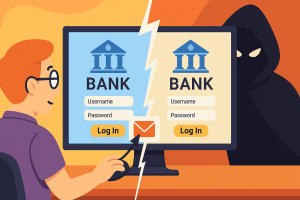 You click a link. It takes you to a site that looks exactly right. The logo matches, the name checks out, and everything feels familiar. But something’s off. And before you realize what it is, you’ve handed over your login, your credit card, or worse, your network credentials. The trick wasn’t in the layout or the content. It was in the letters.
You click a link. It takes you to a site that looks exactly right. The logo matches, the name checks out, and everything feels familiar. But something’s off. And before you realize what it is, you’ve handed over your login, your credit card, or worse, your network credentials. The trick wasn’t in the layout or the content. It was in the letters.
Cybercriminals are using homoglyphs—lookalike characters from other alphabets—to build fake domains that mimic real ones down to the pixel. A Cyrillic “а” is nearly identical to the Latin “a” your eyes expect to see. To a browser, they’re completely different. To a person, they’re the same. That’s the whole con. [Read more…]
 Hackers posing as IT support are targeting employees at large companies to sneak into their Salesforce systems and steal data. They start with a phone call, pretending to help with a routine issue. The real goal? To get the employee to connect to a fake version of Salesforce’s Data Loader tool. Once that happens, the attackers can quietly grab sensitive company data.
Hackers posing as IT support are targeting employees at large companies to sneak into their Salesforce systems and steal data. They start with a phone call, pretending to help with a routine issue. The real goal? To get the employee to connect to a fake version of Salesforce’s Data Loader tool. Once that happens, the attackers can quietly grab sensitive company data.